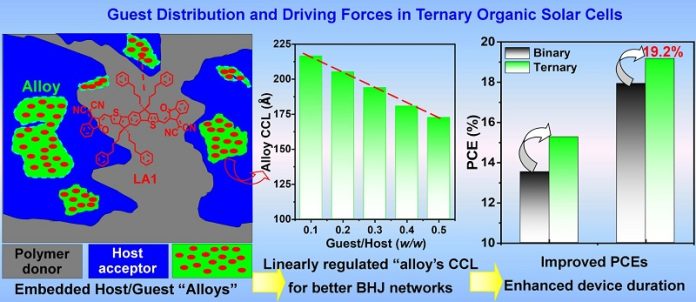
Solar panels are amazing.
They take sunlight and turn it into electricity, which we can use for all kinds of things like powering our homes.
But not all solar panels are created equal. Traditional solar panels are heavy and rigid. They’re made from hard materials like silicon, and once they’re up, they can’t be moved easily.
But what if solar panels could be flexible like a sheet of paper and light as a feather? Wouldn’t that be cool?
Scientists from the Qingdao Institute of Bioenergy and Bioprocess Technology in China thought the same thing.
They’ve been working on a special kind of flexible solar panel made from organic materials. “Organic” here doesn’t mean it’s grown like a vegetable; it means these solar cells are made from carbon-based materials that can be flexed and bent.
The best part? These flexible solar cells could be as efficient as the regular, rigid ones we usually see.
Imagine rollable solar panels that you can take camping, or super-thin solar skins you could stick on your phone for a recharge. Even better, you could have semi-transparent solar windows or solar-powered clothes. Sounds like science fiction, but it’s getting closer to reality!
Now, the main problem with these flexible solar panels has been that they’re not as good at turning sunlight into electricity as their rigid counterparts. That’s because they usually have two main parts that work together—a “donor” and an “acceptor.”
But the Chinese researchers decided to add a third player called the “guest” into the mix. This “guest” part helps these flexible solar cells catch more kinds of sunlight, making them better at their job.
Where you place this “guest” part in the solar cell can make a big difference in how well it works. Think of it like adding a pinch of salt to a recipe; put it in the wrong place, and it won’t taste right.
But get it just right, and it’s delicious! The scientists played around with where to put this “guest” component and discovered the perfect spot. They also used a special kind of molecule, called LA1, to make it even more efficient.
The results were pretty awesome. At first, they got a 15% improvement in how well the solar cell converted sunlight into electricity. Then they made a few more tweaks and bumped that up to 19%.
That’s almost as good as many traditional solar panels!
So, what’s next? The researchers think they’ve made a big leap, but they still want to understand why these changes made such a difference. They’re planning more experiments to get to the bottom of it.
In simple terms, the future of solar power might be flexible, lighter, and even more efficient than we thought. The sun has never looked so bright!
Follow us on Twitter for more articles about this topic.
Source: Chinese Academy of Sciences.



